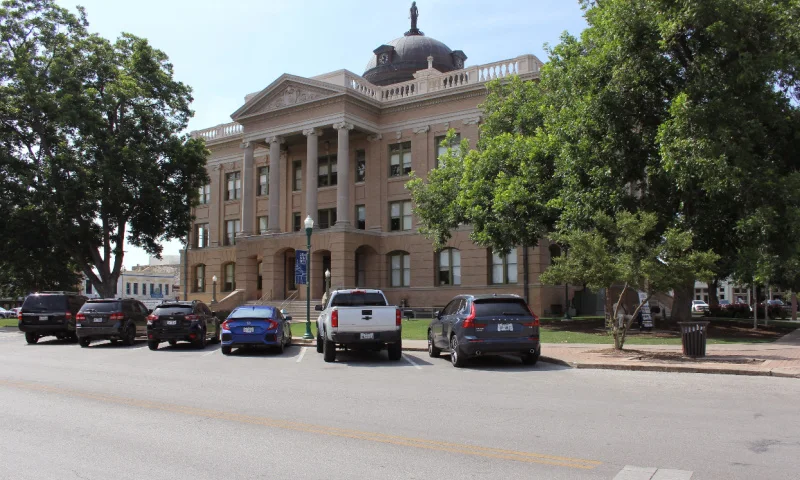This just in, fresh off the online printing press: the US is opening its borders for foreign nationals in November! After a lengthy 18-month ban that separated families, friends, and non-essential business travelers, the pan-Atlantic separation is expected to end early next month. However, no exact date has been released yet. The European ban has significantly impacted airlines that have been itching to allow travelers to fly across the pond again, while the domestic US tourism industry is getting ready to receive visitors as soon as possible.
Traveling plans are back on the books for many wanting to have a long-awaited holiday, see their loved ones or travel for business. After over 550 days of closed borders, everyone from European officials to grounded airline pilots are celebrating news, something that is abundantly evident when surveying Google search analytics. Searches for US-bound international flights increased by 27% on September 20th alone, a staggering increase when you compare the number of searches from the previous day. At the same time, there was a 68% increase in searches for flights from Europe to the US.
Leveled Playing Field
Since March of 2020, the US travel ban has been in place, restricting traveling from many areas across the globe. This had been precisely disturbing for the European Union that lifted the ban for US citizens to travel in the EU back in June of this year. While there was an expectation of reciprocity from the US officials, this did not come, despite weeks of intense lobbying from European officials.
Since then, the US ban made little sense to EU officials because many European countries experienced increased vaccination while new infection rates decreased despite the Delta variant. The US did not manage to match vaccination rates, and recent spikes in infections occurred due to the new variants. Furthermore, the ban did little to accommodate the changing numbers. There were instances where countries with higher infection rates were allowed, but some that had a better reign on the COVID pandemic were still under this ban. For example, while the Czech Republic dropped from almost 17,000 daily cases in March to fewer than 100 during July, the ban was not lifted.
The gig is up, and the penny dropped in August when Brussels issued recommendations for EU countries to impose restrictions for US inbound travelers. The decision came as a result of the increase of infections and hospitalizations from the Delta variant on US soil. Given that the US registered more than 100,000 new daily cases, vaccination efforts stalled and fell behind the EU, they removed the US from the EU’s safe travel list in early September. These recommendations aren’t mandatory, but countries like Norway, Sweden, and Bulgaria already implemented restrictions for nonessential arrivals from the US. It’s safe to say that unvaccinated Americans can expect more restrictions from EU countries in the future.
The continuous back and forth taking place at the highest levels of government have reached an understanding on September 20th. A new international travel system will be implemented, based on individuals and not on countries. In other words, by implementing vaccination requirements, pre-flight tests, and follow-up procedures, individuals will be allowed to travel to the US. Fully vaccinated foreign nationals with proof of negative COVID test, accepting follow-up procedures, and contact tracing if necessary will be allowed entry in the US. The test has to be at most 72 hours old when getting on the plane, and they will have to give out their phone number and email address. But what can they expect once they arrive? Let’s see what everyone can expect from this ban lift.
State Level Safety Measures
People from outside the US often tend to look at the United States of America as one big country. Which it is, but, unlike European countries, the US doesn’t have one personality or trait applicable to all of America. Each state has its own personality, legislation, and organization. These differences will be more visible regarding how health and safety protocols are implemented depending on the state. Starting from the basics, European countries were fast to implement vaccine passports, but only some parts of the US have implemented them (i.e., New York City).
The requirement for incoming travelers to be fully vaccinated also creates a dilemma as the Center for Disease Control and the FDA approved some vaccines, but not all (i.e., AstraZeneca). CDC officials state that World Health Organization-approved vaccines will also be considered viable. All of the travelers heading to the US should look for state situations, and requirements as well so they know what to expect depending on the area where they intend to travel.
Crowded Popular Destinations
Whether you want to see A-listers on the streets that provide the best views of the Hollywood sign, or you’re looking forwards to the chaos, mayhem, and attractions of the Big Apple, you’re bound to get packed streets in most popular destinations. While those destinations are worth it, smaller metropolitan destinations have a different kind of attraction that might appeal to European visitors. Those looking for an authentic “American” flavor and experience should focus on cities like Pittsburgh, Kansas City, Nashville, or Minneapolis. These “second-tier” cities may not be on many European must-see destinations, but they should be as they offer a specific cultural experience and world-class culinary scenes.
Increased Vacation Costs
The news of lifted travel bans and growing demand for hotel rooms and vacation rentals from international travelers could affect prices, especially in popular destinations. As holidays are closing in, bookings are already at high capacity in many US areas, and the influx of European travelers will only put more pressure on the supply of accommodations.
We know that there was an increase in vacation rental reservations of 377% from November and December of 2020. Furthermore, the average rental goes for $415 per night for Thanksgiving, an increase of 58% since 2019, and $599 for Christmas from $332/night in 2019.
It might not be the best idea to book that Thanksgiving international family reunion at a first-class holiday resort in 2021. However, if you do, be aware that your wallet will be much slimmer after it.
Hospitality and Tourism Shortages
The COVID pandemic affected the lives of many Americans, and due to lockdowns and other restrictions imposed on the tourism industry, the hospitality industry is bearing the cross. During the pandemic, many hospitality workers were sent home as restaurants closed. While many decided to wait things out, hoping life would get back to normal, some switched professions and looked for work elsewhere, dissatisfied with the limited compensations received.
The result of this may be labor shortages in the hospitality and tourism industries in some areas hit hardest by the pandemic. So, while American customer service is known and praised worldwide, European travelers should come equipped with patience and managed expectations. Check-in lines may form in popular destinations, and up-scale amenities may not be as up-scale as one might expect given the shortages in employees experience by the industry.
Limited Supplies of Rental Cars
Those Europeans planning to travel across the US on a road trip, either for the sake of adventure or wanting an extra layer of protection during the pandemic, might need to rethink their plans. There’s an ongoing rental car shortage across the US, especially in sought-after vacation destinations and tourist attraction points. Experts say that this shortage might be problematic during winter times, particularly for those that want to experience those beautiful sunny days of Florida, our nation’s Sunshine State.
Those who do not want to give up on their plans should look into booking rental cars or even pre-paying for services. This will increase their chances of having that quintessential American road trip as operators prioritize these options. However, this will not 100% guarantee the services, which might deflate some Europeans’ plans.
Confusing Health Regulations
When Europeans plan to travel to the US for leisure, they often book stays or organize their trip so that they don’t see only one city or state. Going back to Europeans seeing America as one country, it is a bit bigger than any European country. Actually, fun fact: Did you know that while the US is not bigger than Europe as a continent, it is bigger than the European Union, which does not include all European countries. Now, while Europeans look to America as one country, they are aware of its size. However, the costs of a US trip motivates them to see as much of it as possible during one trip. This is where things might get confusing. The US doesn’t operate as one singular entity. Each state has its own legislature and restrictions or limitations imposed. These may differ from one state to the other, so when traveling from Europe, make sure you do your research and are prepared.
For the most accurate, up-to-date, and thorough information regarding COVID data, local mandates, and the number of hospitalizations, the CDC county-level coronavirus data tracker is the best source. When it comes to state regulations for mask requirements and vaccinations, things get even more tricky. Mandates can also be encountered on the city level. For example, those visiting New York City, New Orleans, and San Francisco should know that vaccines are required for most indoor spaces, including restaurants. From a federal level – applicable across the US – every federally regulated space requires masks to be worn (airports, airplanes, regional and local transport). But those are federally regulated spaces only. Everywhere else might not be as easy to implement such mandates, assess them, verify if they are imposed and respected. Using a travel advisor or agent can help, but while they get information from on-site inspections, they cannot ensure that the policies are adhered to.
Limited Testing Options
In most areas across Europe, tests are easily available, affordable, or free, and testing centers can be found in most if not all major cities. This fact makes it incredibly easy for Europeans to get tested for COVID. However, while the US is expanding its testing capacity, the options available at the current time may not be sufficient. While there are testing centers across the US, they can not be found in every region, and rural areas are particularly problematic. Travelers from Europe must ensure they have the time and possibility to get the test required for their return trip, especially if they come from countries that impose bans or restrictions for inbound US travelers. Furthermore, visitors must know that while children under 12 are generally exempt from vaccine requirements for entry in the US, children two years and older require a negative COVID test.
Conclusion
Everyone on both sides of the pond is enthusiastic about this news, but travelers should be open to change and exercise flexibility. The British Prime Minister Boris Johnson applauded the step taken by the Biden Administration by calling it “a fantastic boost for business and trade, and great that family and friends on both sides of the pond can be reunited once again”. The US ambassador in Germany, Emily Haber, tweeted “hugely important to promote people-to-people contacts and transatlantic business”. But while traveling and experiencing some of the best things that the US offers, European travelers should not forget that we are still in this pandemic.
The past year and a half showed us that everything could change in the blink of an eye. This does not mean that travel plans should be further postponed, but making them more flexible might be a good idea. Instead of going for the most affordable option, spend the extra money required for refundable everything. You might also want to look into some non-traditional vacation rentals for a unique traveling experience. Whether it’s the flight, the lodging, or other expenses, book the refundable options. It’s safer to spend an extra buck and know you can postpone the trip than be rigid and lose all that money if things change overnight. While the latest news does say that the US plans to open its borders for vaccinated international travelers from November, nothing is set in stone. Everything that happened due to COVID seemed more fictional than many sci-fi movies, and preparing for the unexpected was the biggest lesson this pandemic taught us. Be ready for anything.
Let us know in the comments section below what your plans are once your family and friends from across the pond can come over for a visit. Like & Share this article with friends and family, so the news reaches Europe in time. Although, given the time zone differences, Europe is ahead of the US. You know … like … they’re in the future. They’re probably already organizing their trip and planning a surprise party if all turns out well.















I’m expecting our Canadian friends to start coming down in bigger numbers.